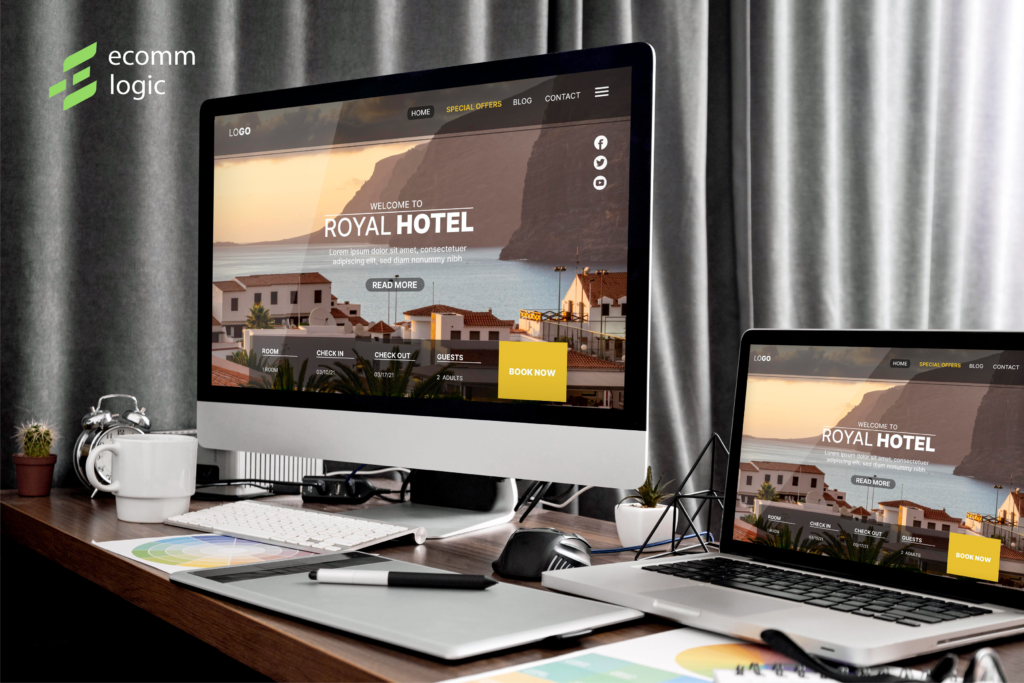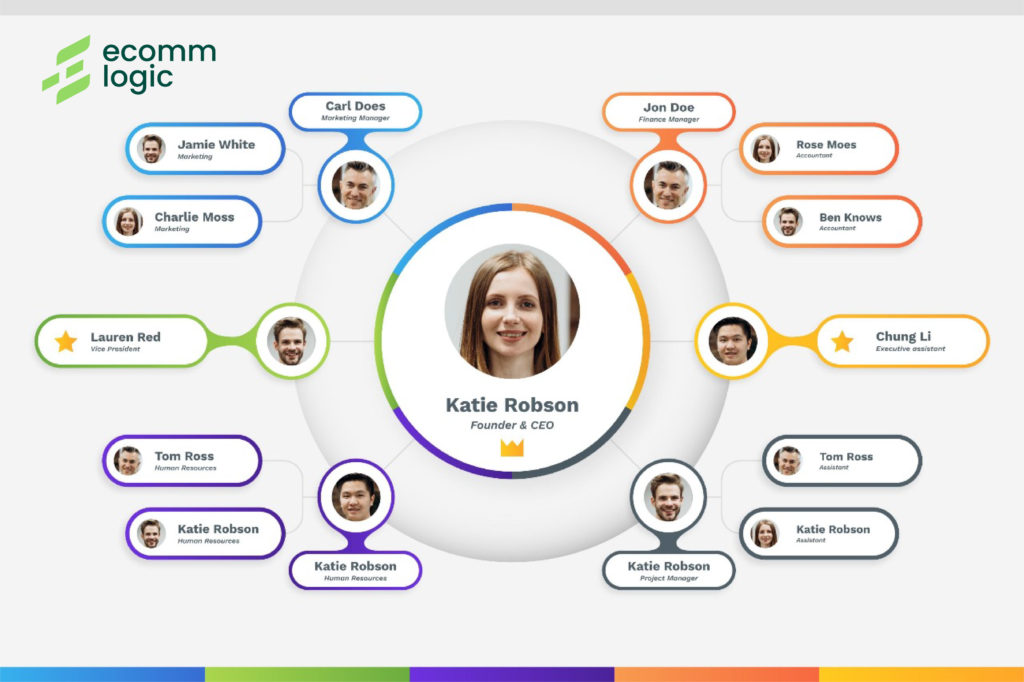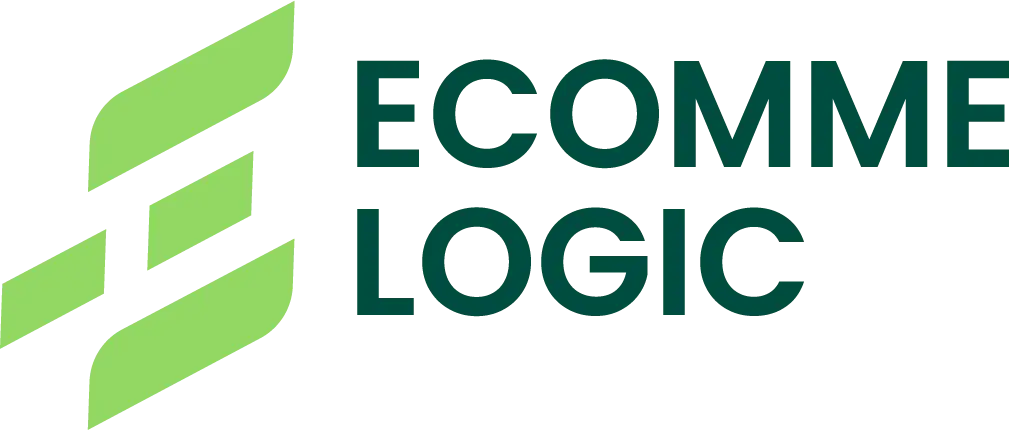Introduction
In the digital world, your homepage is often your brand’s first handshake — and you only get one chance to make it count. For online stores, it’s not just about aesthetics; your homepage must actively convert visitors into customers. At EcommeLogic, we design e-commerce websites that don’t just look good — they perform. In this blog, we’ll walk you through the essential elements of a high-converting homepage and how you can optimize your store for real sales results.

1. Make a Strong First Impression
The first few seconds on your homepage can make or break a sale. That’s why the above-the-fold area (the section visible without scrolling) is critical.
This space should immediately answer three questions:
- What is this store about?
- What does it sell?
- Why should I care?
Use a clear and bold headline, a short value proposition, and a prominent call-to-action (CTA) like “Shop Now”, “Get Started”, or “View Bestsellers”. Pair this with a high-quality hero image or a slider showcasing your top products.
Example:
“Natural Skincare That Works — Backed by Science & Loved by Thousands.”
[Explore Collection]
This clarity helps eliminate confusion and pushes visitors to take immediate action.
2. Streamline Your Navigation
Your homepage should feel intuitive — not overwhelming. Keep your navigation bar clean, with no more than 5–7 main links. Avoid dropdowns that go three levels deep. Think:
- Home
- Shop (with categories like Men, Women, Accessories)
- About Us
- Blog
- Contact
- Cart
Also, consider using a sticky header (a menu that stays visible as users scroll) and a search bar for users who already know what they’re looking for.
Remember: If users can’t find what they need within seconds, they’ll bounce.
3. Showcase Best-Sellers and New Arrivals
People love social proof. Featuring best-selling, top-rated, or newly launched products increases engagement and trust. Use clean product cards with:
- High-resolution images
- Short names or categories
- Pricing and any discounts
- Star ratings or “Bestseller” tags
A product carousel or grid layout can keep your homepage engaging while encouraging users to start browsing.
4. Build Trust Through Visual Proof
Trust is one of the biggest conversion factors for online stores. Visitors want to know they’re in good hands before they make a purchase. You can establish credibility by including:
- Customer reviews or testimonials
- Secure payment icons (Visa, Mastercard, SSL-secured)
- Free shipping & returns badges
- Media mentions or certifications if available
You might also highlight how many customers you’ve served or how long you’ve been in business. These small elements build confidence quickly.
5. Tell Your Story
Today’s shoppers care about the why behind the brand. Use a short section on your homepage to tell your story. It doesn’t have to be long — 2–3 lines explaining your mission or values is enough.
Example:
“At EcommeLogic, we believe great design is nothing without results. That’s why we build e-commerce sites that convert clicks into customers.”
A good story creates emotional connection — and emotion drives action.
6. Optimize for Mobile-First Design
With over 70% of e-commerce traffic coming from mobile devices, a mobile-friendly homepage isn’t optional — it’s essential.
Make sure your site is:
- Responsive (adapts to screen size)
- Fast-loading (under 3 seconds)
- Easy to navigate with thumb-friendly buttons
- Scrollable with vertical product carousels or sections
Google also considers mobile experience in its ranking algorithm — so this isn’t just about UX, it affects SEO too.

7. Include Multiple Calls-to-Action (CTAs)
One CTA isn’t enough. A high-converting homepage should feature CTAs throughout the page, guiding visitors step by step:
- After the hero section
- Below product showcases
- Before the footer
- In popups or banners (offering discounts, signups, etc.)
Don’t overdo it, but make sure users always know their next step.
8. Use Analytics and Heatmaps
Lastly, you can’t improve what you don’t measure. Use tools like:
- Google Analytics to track homepage performance
- Hotjar or Crazy Egg for heatmaps and scroll behavior
- A/B testing tools to test different hero headlines, CTA placements, or product showcases
At EcommeLogic, we use data-driven insights to continuously refine homepage designs for maximum ROI.
Conclusion
Your homepage isn’t just a welcome mat — it’s the engine that drives your sales funnel. A thoughtfully designed homepage reduces bounce rates, builds trust, and increases conversions.
Looking to redesign or optimize your online store?
EcommeLogic is here to help you build a homepage that not only looks amazing — but performs.


